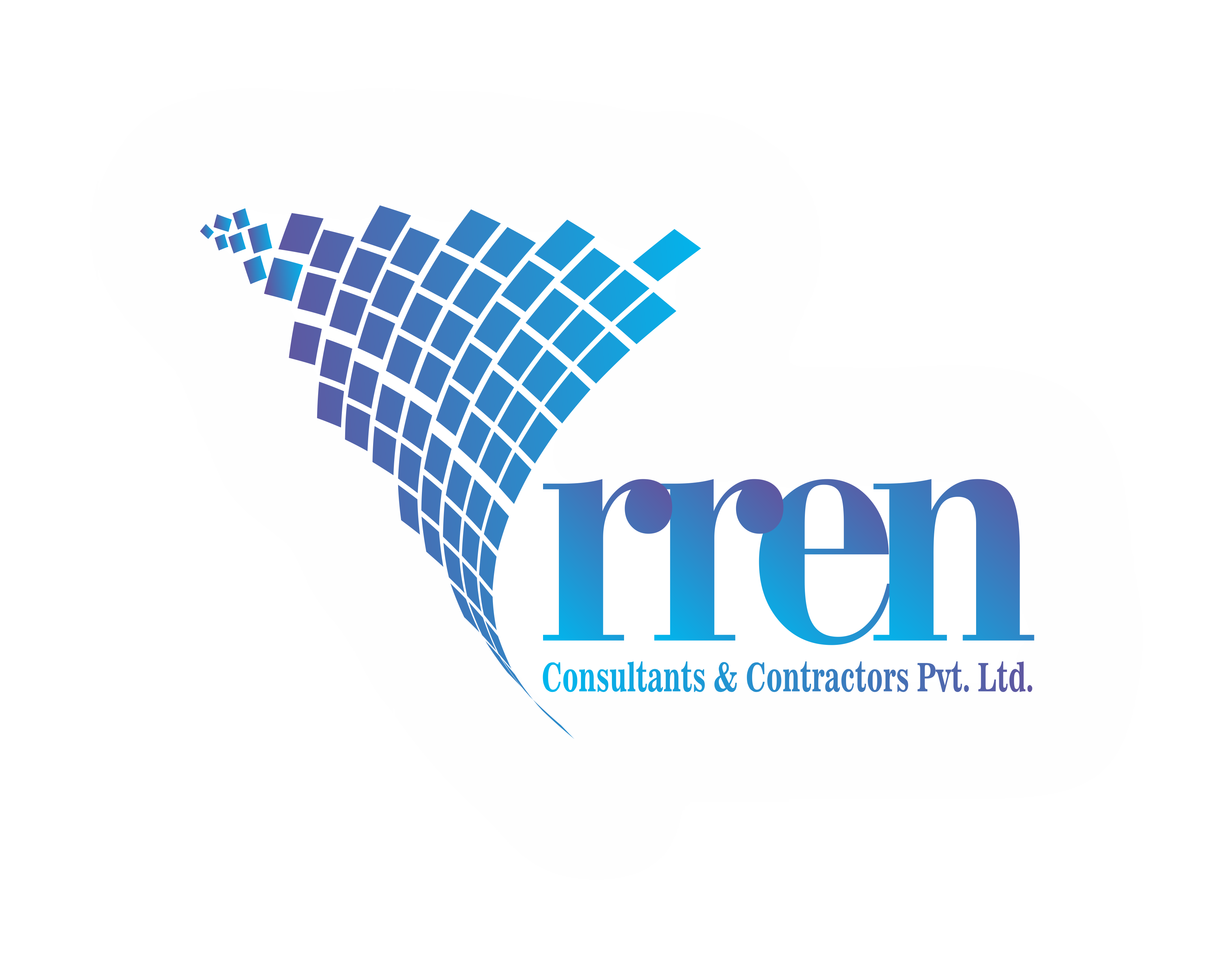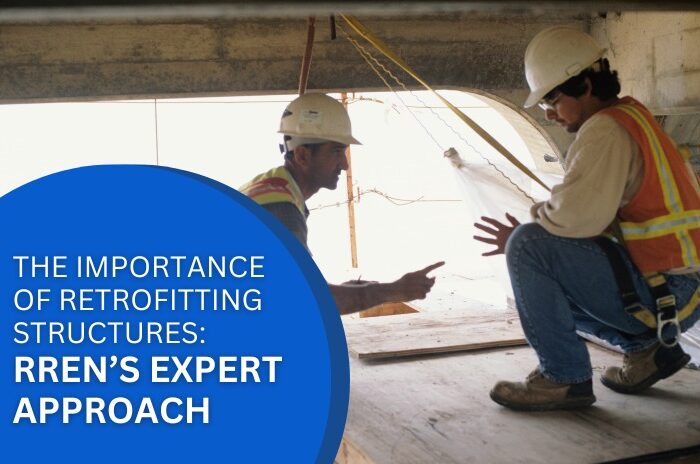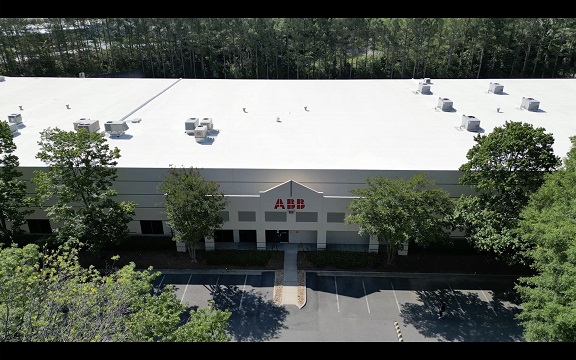![]() Published by Tom Jose, Senior Engineer – D&E| RREN Consultants & Contractors Pvt. Ltd. | Last updated: 14/07/2025
Published by Tom Jose, Senior Engineer – D&E| RREN Consultants & Contractors Pvt. Ltd. | Last updated: 14/07/2025
Retrofitting structures is a crucial and increasingly important practice in the construction and civil engineering industries. It involves modifying and upgrading existing buildings and infrastructure to improve their performance, safety, functionality, and sustainability. Instead of demolishing and rebuilding, retrofitting offers a smart, sustainable, and often more economical solution.
The Importance of Retrofitting Structures:
- Enhanced Safety and Resilience:
- Seismic Resistance: This is perhaps the most critical aspect, especially in earthquake-prone regions. Older buildings may not have been designed to current seismic codes, making them vulnerable to collapse during an earthquake. Retrofitting, through techniques like adding shear walls, base isolation, or strengthening columns and beams, significantly enhances a building’s ability to withstand seismic forces, protecting lives and property.
- Resistance to Other Hazards: Retrofitting can also improve resistance to other natural disasters like high winds, floods, and even fire, by upgrading structural elements, waterproofing systems, and fire safety measures.
- Aging Infrastructure: Many structures built decades ago are showing signs of material degradation, corrosion, and wear and tear. Retrofitting addresses these issues, restoring and enhancing structural integrity.
- Compliance with Modern Building Codes and Standards:
- Building codes are continuously updated to incorporate new knowledge, technologies, and lessons learned from past disasters. Older buildings often do not meet these contemporary standards. Retrofitting brings these structures up to code, ensuring they are safe and legal for continued use.
- Extended Lifespan of Structures:
- Retrofitting effectively rejuvenates aging buildings, extending their useful life for decades. This prevents the need for costly and resource-intensive demolition and new construction.
- Cost-Effectiveness:
- In many cases, retrofitting is significantly more cost-effective than demolishing an existing structure and constructing a new one. This is particularly true in urban areas where land is expensive and demolition creates significant waste.
- Environmental Sustainability (Green Retrofitting):
- Reduced Waste: By preserving existing structures, retrofitting drastically reduces construction and demolition waste that would otherwise end up in landfills.
- Energy Efficiency: Retrofitting can incorporate modern energy-efficient technologies like better insulation, updated HVAC systems, LED lighting, and solar panels, leading to substantial reductions in energy consumption and operational costs, and contributing to net-zero goals.
- Increased Property Value and Functionality:
- Retrofit buildings are safer, more energy-efficient, and often incorporate modern amenities, making them more attractive to tenants and buyers, thus increasing their market value.
- It allows for changes in building use (e.g., converting a residential building to commercial) by upgrading the structure to handle new load requirements.
- Preservation of Heritage and Aesthetics:
- For historic or architecturally significant buildings, retrofitting is essential for preserving their cultural heritage and unique aesthetic while making them safe and functional for modern use.
RREN’s Expert Approach to Retrofitting:
RREN as a structural consultant and contracting firm appears to emphasize a comprehensive and specialized approach to structural retrofitting. Their expert approach would typically involve:
- Customized Retrofitting Solutions:
- Recognizing that each structure is unique, RREN would develop tailored solutions instead of a one-size-fits-all approach. This involves selecting the most appropriate retrofitting techniques based on the building’s specific vulnerabilities like (available Good For Construction Drawings with respect to the structural detail), desired performance level like (Compressive strength parameters, elasticity of steel), and budget (feasibility based on cost effectiveness).
- Thorough Structural Assessment and Due Diligence:
- Non-Destructive Testing (NDT): In the absence of structural data, Non-Destructive Testing (NDT) is preferred to assess the condition and integrity of the structure. Utilizing advanced techniques to evaluate the existing structural health without causing damage. This helps identify hidden weaknesses, material degradation, and existing stress points.
- Forensic Analysis: Investigating the causes of damage or deterioration, such as cracks, spalling, or corrosion.
- Detailed Engineering Analysis: Comprehensive analysis of the existing structure against current building codes and anticipated loads (including seismic, wind, and updated live loads).
- Utilization of Cutting-Edge Techniques and Materials:
- CFRP Wrapping (Carbon Fiber Reinforced Polymer Wrapping): It is a technique used in structural engineering to strengthen and retrofit existing concrete, masonry and steel structures. It is a high-performance, lightweight composite material used to strengthen existing structures. It is externally bonded to structural elements to enhance their load-bearing capacity, ductility, and durability. With excellent strength to weight ratio and corrosion resistance, CFRP offers a fast, non-intrusive method of retrofitting making it ideal for infrastructure repair, seismic upgrades, and extending service life. The approach requires assessment and design to determine the extent of strengthening required through structural analysis
RREN Approach:
CFRP wrapping begins with assessing the required level of strengthening through structural analysis. It is used to enhance the flexural, shear, and confinement capacities of structural elements such as beams, slabs, columns, and walls. CFRP is applied to the tension zones of beams and slabs to increase their load-carrying capacity, wrapped around the sides to prevent shear cracks, and used around columns to improve confinement, prevent bursting, and enhance ductility.
- Steel Jacketing: A traditional and proven structural strengthening technique that involves enclosing an existing structural member usually a reinforced concrete (RC) column or beam with steel plates or sections to improve its load-carrying capacity, ductility, and confinement, especially under axial loads and seismic forces
Steel jacketing involves assessing the extent of strengthening through structural analysis, followed by designing the jacket thickness, anchorage, and welds or bolts as per code requirements. The process begins with surface preparation by removing loose concrete, cleaning the surface, and applying corrosion-resistant coating if needed, along with installing shear connectors or anchors. Steel plates are then welded or bolted around the member, typically in U- or L-shaped segments, leaving a 10–30 mm gap from the concrete surface. This gap is filled with non-shrink cementitious or epoxy grout to ensure proper stress transfer. Finally, base and top anchorage are provided as required, and a protective coating is applied for fire or corrosion resistance. - High-Performance Repair Materials: Using specialized grouts, repair mortars, and coatings for crack repair and concrete rehabilitation.
4. Compliance with Stringent Safety Standards:
- Ensuring that all retrofitting work not only meets but often exceeds modern safety and regulatory standards (like IS 1893 and IS 13920 in India) to provide long-term resilience and peace of mind.
By combining in-depth analysis, innovative techniques, and a commitment to safety and sustainability, expert firm like RREN play a vital role in transforming existing structures into more resilient, efficient, and valuable assets for the future.










